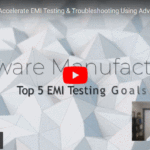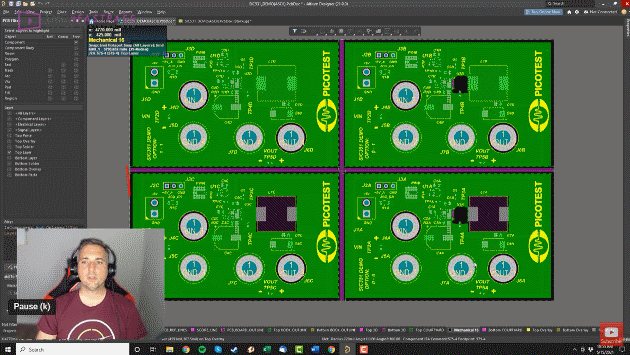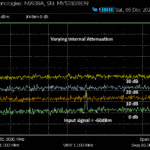With the emergence of crowd funding platforms like Kickstarter coupled with the explosive growth of easy to use hardware development platforms like Arduino™, a new wave of electronic products is being unleashed around the world by creative enthusiasts who may otherwise be relegated to garage tinkering. For these makers and hardware startups, the road to launching a viable product is difficult enough without introducing the extra barrier to entry of product certifications.
Most though, require at least some form of testing to show compliance with the rules that apply to their particular product. Information on the subject is often hard to find and is seldom concise. When I owned and managed an FCC listed test lab, I noticed that even well established hardware companies often struggled to work out which rules applied and how to interpret them.
In this article, I dig into a top level overview of the many rules and regulations that can stand in the way of earning money from product sales.
Certifications for electronic products is such a huge subject because there are so many different types of electronic equipment and so many different regulations that can apply. Regulations can differ per geographical region, per product type and per industry.
This article is an attempt to give not a bird’s eye view, but a moon’s eye view. Because birds can only see as far as the horizon, a bird’s eye view would be too myopic. As a hardware company legally bringing your product to market in many geographic regions around the world, you’re going to need a better view than that.
What is Regulatory Testing?
Regulatory testing is mandated by various governmental and non-governmental organizations around the world to help provide order to the huge number of electronic products that enter the market every year. For most electronic hardware manufacturers, jumping over the regulatory testing hurdle is essential for legally marketing and selling their product.
There are many types of regulatory testing that can apply to electronic products. For creators of electronic hardware products, the big 3 regulations that you usually have to concern yourself with are EMC, safety and RF (Radio Frequency aka Wireless). Depending on the industry that you’re designing your product for and which geographic regions you’ll be selling into, other regulations may apply.
Types of Testing & Certifications
Firstly, I should define what I mean by “certification”. Typically, a product is tested by a 3rd party lab or in-house lab to make sure it complies with a specific set of tests or standards. If a product passes those tests or standards, it may be designated as “certified”, “approved”, “authorized”, “listed”, “verified” or “compliant” depending on which test was undertaken and what authority the organization performing the test holds.
For now, I’m going to use the word “certification” to mean compliance with a test or standard, but understand that it may not be exactly the correct word to use in all cases. In the same way, I may use the words “regulations”, “rules” and “laws” interchangeably. They should all be understood to just be indicative of a set of instructions or guidelines set by a particular entity or agency that it is your job as manufacturer to comply with.
Next, I’m going to break down the types of certifications you may need into some large categories. The first two categories, “EMC” and “RF” are by far the most common test requirements for electronic devices. The subsequent test requirements “SAR”, “Safety”, “Environmental” and “Proprietary” are all dependent on what type of electronic device you’re making, which geographic regions you’re selling in to and what the application of your product actually is.
EMC – Electromagnetic Compatibility Testing
 This type of certification applies to almost every electronic product, regardless of product type, geography or function. There are a few exemptions, but for most of us who design electronic products, there is no escape! You can blame the laws of physics for that one, or the Scottish physicist James Maxwell for formulating the theory of electromagnetic radiation if you’re looking for a culpable character.
This type of certification applies to almost every electronic product, regardless of product type, geography or function. There are a few exemptions, but for most of us who design electronic products, there is no escape! You can blame the laws of physics for that one, or the Scottish physicist James Maxwell for formulating the theory of electromagnetic radiation if you’re looking for a culpable character.
EMC testing involves measuring the electric fields that your product unintentionally
generates to ensure that the strength of the fields does not break the limits set by regulatory agencies around the world. This is called “emissions testing“. If your product is powered from a public AC power supply, the noise that your device injects back on to the power grid may also be measured. This is primarily to ensure that your product does not interfere with nearby electronic products.
EMC testing also includes “immunity testing” in some geographic regions and for some specific product types. Immunity testing involves subjecting your device to several electromagnetic phenomena to ensure that it continues to perform as expected. Examples of the phenomena include ESD (Electrostatic Discharge) zaps (for example, when you get out of your car and get zapped when you touch the metal) as well as power supply surges. Immunity testing is mandatory for most electronic products sold into Europe (CE Mark).
Incredibly, approximately 50% of electronic products fail EMC testing first time. Failures usually mean product launch delays of several days to several weeks coupled with extra testing and production expenses. This is the problem that my company EMC FastPass was created to address.
RF (Wireless) Testing
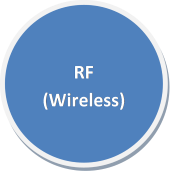 If your product includes a wireless transmitter that hasn’t been previously certified, then you’re most likely going to need to have your product tested for RF compliance. This type of testing/certification also applies regardless of geographic location or product type.
If your product includes a wireless transmitter that hasn’t been previously certified, then you’re most likely going to need to have your product tested for RF compliance. This type of testing/certification also applies regardless of geographic location or product type.
RF testing involves measuring and characterizing the RF signal that your product intentionally generates. RF regulations are designed to provide order to the electromagnetic spectrum and ensure that wireless devices can live harmoniously together. They also provide limits for occupational exposure to RF fields.
SAR – Specific Absorption Rate Testing
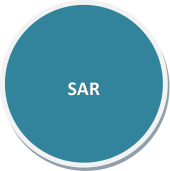 SAR testing is closely related to RF testing. This is used to measure the amount of RF energy absorbed by the human body when using or wearing a wireless device to ensure that it’s safe. SAR testing is generally only necessary for wireless devices that are worn or used in close proximity to a human body (laptop, cell phone etc..). The applicability of SAR testing to your product depends on the frequency and power of the transmitter and its proximity to a human in normal usage.
SAR testing is closely related to RF testing. This is used to measure the amount of RF energy absorbed by the human body when using or wearing a wireless device to ensure that it’s safe. SAR testing is generally only necessary for wireless devices that are worn or used in close proximity to a human body (laptop, cell phone etc..). The applicability of SAR testing to your product depends on the frequency and power of the transmitter and its proximity to a human in normal usage.
Most countries/regions have regulations for SAR test requirements. SAR testing labs will often also be EMC/RF testing labs. Contact a SAR lab to verify whether SAR testing applies to your product.
Safety Testing
Safety testing assures consumers that a product is safe to use and complies with the relevant standards for a given geographic region and/or industry. Confusingly, safety testing only applies to some electronic products, in some geographic regions, in some circumstances.
 For instance, in North America, safety testing of electronic devices is usually not mandatory (many caveats exist to this rule). Whereas in Europe, most electronic devices that are powered from >50V AC or >75V DC and all wireless devices regardless of voltage are subject to the “Low Voltage Directive” or GPSD (General Product Safety Directive) which are both safety related legal acts.
For instance, in North America, safety testing of electronic devices is usually not mandatory (many caveats exist to this rule). Whereas in Europe, most electronic devices that are powered from >50V AC or >75V DC and all wireless devices regardless of voltage are subject to the “Low Voltage Directive” or GPSD (General Product Safety Directive) which are both safety related legal acts.
The applicability of safety testing is not only driven by geographical region, but also application and end customer. For example, safety testing of most medical devices is mandatory regardless of geography. This is the same for many other international product safety standards.
As an electronics manufacturer, your end customer often has the final say whether you need to have your product tested for safety. There may not be a legal mandate for your to do safety testing on your product, but your end customer may demand it.
Also in the US, the Department of Labour Occupational Safety and Health Administration (OSHA) mandates that many electrical products used in most public and private workplaces need to comply with safety rules and must be approved/certified by an NRTL (National Registered Testing Lab). So, if your product is destined for a workplace, you may well need to do safety testing.
Environmental Testing
Environmental test requirements can be split up into two sub categories. The first is environmental in the sense of “environmentally friendly”. This type of testing relates to subjects such as energy efficiency (e.g. Energy Star), toxic substances and material composition (e.g. Lead Free RoHS) as well as recycling. Lead free compliance and recycling symbols are required for most electronic equipment in Europe. Energy efficiency testing tends to not be mandatory, but be driven by customer demand instead.
 Sometimes subsidies are given by governments to consumers for purchasing energy efficient products, so it makes sense to cater to this market.
Sometimes subsidies are given by governments to consumers for purchasing energy efficient products, so it makes sense to cater to this market.
The second type of environmental testing deals with how a product performs in different ambient environments. Depending on the specific requirements for the product, this may include subjecting the device to extremes of temperature, moisture, vibration and even explosives. Wireless testing for Europe and the US often requires temperature testing to ensure that the transmission signal doesn’t drift outside the allowable frequency band.
Demand for these tests tends to be driven by the end customer requirements and specific product standards. If the environment that your product is designed to be used in could perceivably have a negative effect on your product’s performance, and your end customer cares about that, then the chances are that some type of environmental testing applies. Additionally, if you make claims about the environmental operating conditions in your user manual, then you’ll need to back those up with data obtained through testing.
Proprietary Testing
What do I mean by proprietary certifications/licenses? Here I’m talking about instances where you need to work with a 3rd party who are 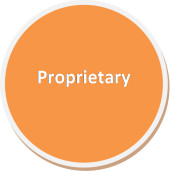 usually a private body or organization to make sure that your device/software/interface is compatible with their set of standards, protocols or other types of rules they may have.
usually a private body or organization to make sure that your device/software/interface is compatible with their set of standards, protocols or other types of rules they may have.
Common examples of this include Apple, Android, Bluetooth and Zigbee. In many of these cases, it’s usually not mandatory to get these certifications, but it does allow you to ‘prove’ that your device is compatible with their technology.
In this case, they may allow you to use their trademark on your packaging which can help with sales and get you into distribution channels that would be otherwise unavailable.
Conclusion
In this article I’ve given a top level overview of some of the main types of testing and certifications that your product may need before it can legally be sold. Hopefully it’s given you a bit of a clearer picture of the overall regulatory landscape!


